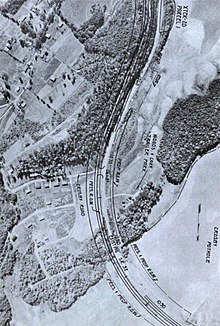This article has multiple issues. Please help improve it or discuss these issues on the talk page. (Learn how and when to remove these template messages)
|



A right of way (also right-of-way) is a transportation corridor along which people, animals, vehicles, watercraft, or utility lines travel, or the legal status that gives them the right to do so. Rights-of-way in the physical sense include controlled-access highways, railroads, canals, hiking paths, bridle paths for horses, bicycle paths, the routes taken by high-voltage lines (also known as wayleave), utility tunnels, or simply the paved or unpaved local roads used by different types of traffic. The term highway is often used in legal contexts in the sense of "main way" to mean any public-use road or any public-use road or path. Some are restricted as to mode of use (for example, pedestrians only, pedestrians, horse and cycle riders, vehicles capable of a minimum speed).
Rights-of-way in the legal sense (the right to pass through or to operate a transportation facility) can be created in a number of different ways. In some cases, a government, transportation company, or conservation non-profit purchases the full ownership of real estate, including everything above and below the ground. Many rights-of-way are created instead by easement, which is a right to cross that does not include full ownership of the land. For example, the original owner may still retain mineral rights under the right-of-way easement, but not the right to exclude people from passing through certain parts of what would otherwise be private land.